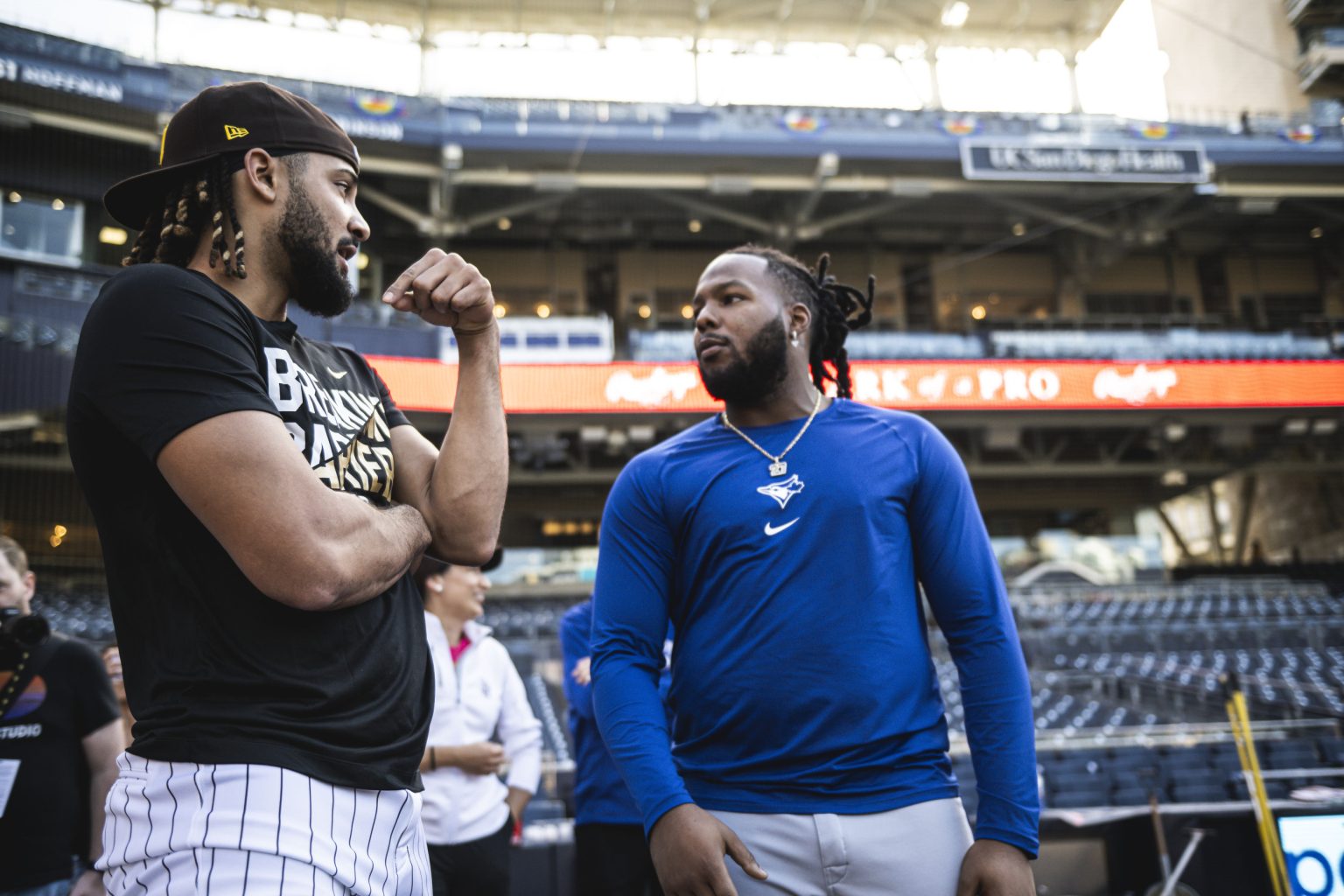The Toronto Blue Jays have consistently found themselves as bridesmaids in the pursuit of top-tier free agents, a pattern that has become increasingly frustrating for the franchise and its fanbase. From two-way sensation Shohei Ohtani to slugger Juan Soto, and most recently pitching phenom Roki Sasaki, the Blue Jays have repeatedly fallen short in their efforts to land these highly coveted players. This recurring scenario begs the question: is it time for the Blue Jays to shift their strategy and embrace a different approach to building a championship-caliber team?
While the pursuit of marquee free agents is often tempting, the Blue Jays’ repeated failures in this arena suggest a potential need for a course correction. One possible avenue for the team to explore is trading away their own star, Vladimir Guerrero Jr., a move that would undoubtedly be a bold and potentially controversial decision. Despite Guerrero’s undeniable talent and offensive prowess, the Blue Jays could leverage his value to acquire a package of players that better addresses their long-term needs and strengthens their overall roster. This strategic shift would signify a move away from the “big fish” mentality and towards a more nuanced and sustainable approach to team construction.
A recent trade proposal by Bleacher Report’s Zachary Rymer illustrates a potential framework for such a scenario. Rymer suggests a deal that would send Guerrero to the San Diego Padres in exchange for a package centered around infielder Jake Cronenworth, left-handed pitcher Yuki Matsui, and the Padres’ top prospect, shortstop Leodalis De Vries. This trade would represent a significant gamble for both teams, with each side weighing the immediate benefits against the long-term implications.
For the Blue Jays, the proposed trade presents a complex financial equation. While shedding Guerrero’s $28.5 million salary would provide some financial flexibility, the combined remaining contracts of Cronenworth and Matsui total $90.5 million, representing a substantial increase in payroll commitment. However, Cronenworth, a versatile infielder with a solid track record, could immediately fill the void left by Guerrero at first base, while Matsui adds a promising young arm to the Blue Jays’ pitching rotation. The true prize in this hypothetical trade for Toronto, however, is De Vries, a highly touted shortstop prospect with five-tool potential. Acquiring De Vries would inject a much-needed infusion of young talent into the Blue Jays’ farm system, addressing a long-standing organizational need.
From the Padres’ perspective, the acquisition of Guerrero would be a significant power move, bolstering their lineup with a dynamic offensive force. The Padres, perpetually chasing the Los Angeles Dodgers in the National League West, are in desperate need of an offensive spark to close the gap. Adding Guerrero, even as an expiring contract, would significantly enhance their chances of competing for a division title and making a deep postseason run. However, the Padres would need to carefully consider the long-term financial implications of acquiring Guerrero, especially given their already significant payroll commitments to other star players. Re-signing Guerrero after the season would be a major financial undertaking, potentially jeopardizing the team’s long-term flexibility.
The proposed Guerrero trade underscores the inherent risks and rewards associated with blockbuster deals in Major League Baseball. For the Blue Jays, it represents a potential turning point, a shift away from chasing free agents and towards building a sustainable core through strategic trades and player development. For the Padres, it’s a high-stakes gamble to bolster their immediate World Series aspirations, potentially at the expense of future financial flexibility. Ultimately, the success of such a trade would hinge on a multitude of factors, including player performance, injury luck, and the ability of both teams to navigate the complex landscape of Major League Baseball’s financial realities.
The cyclical nature of professional sports often necessitates bold decisions and calculated risks. The Blue Jays, having repeatedly fallen short in the free-agent market, may find themselves at such a crossroads. Trading a star player like Vladimir Guerrero Jr., while undoubtedly a difficult choice, could be the catalyst for a much-needed organizational reset. The potential return, a combination of established major leaguers and high-upside prospects, could reshape the Blue Jays’ roster and set the stage for future contention. Ultimately, the decision rests on the Blue Jays’ front office, balancing the allure of immediate impact with the long-term vision of building a sustainable and successful franchise. The allure of a young, controllable core of talent, anchored by a prospect like De Vries, may prove to be a more enticing path to sustained success than the fleeting pursuit of free-agent stars.

